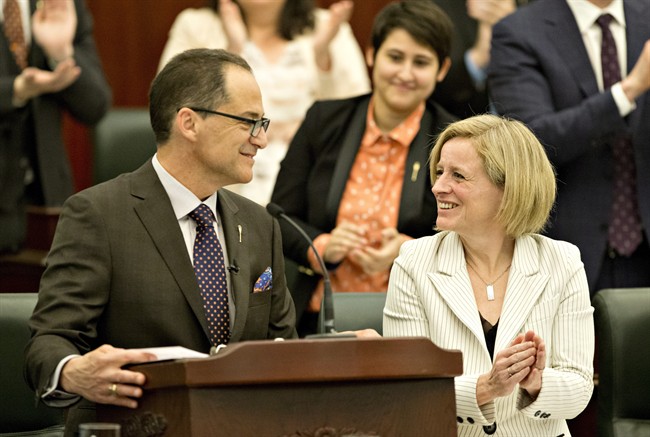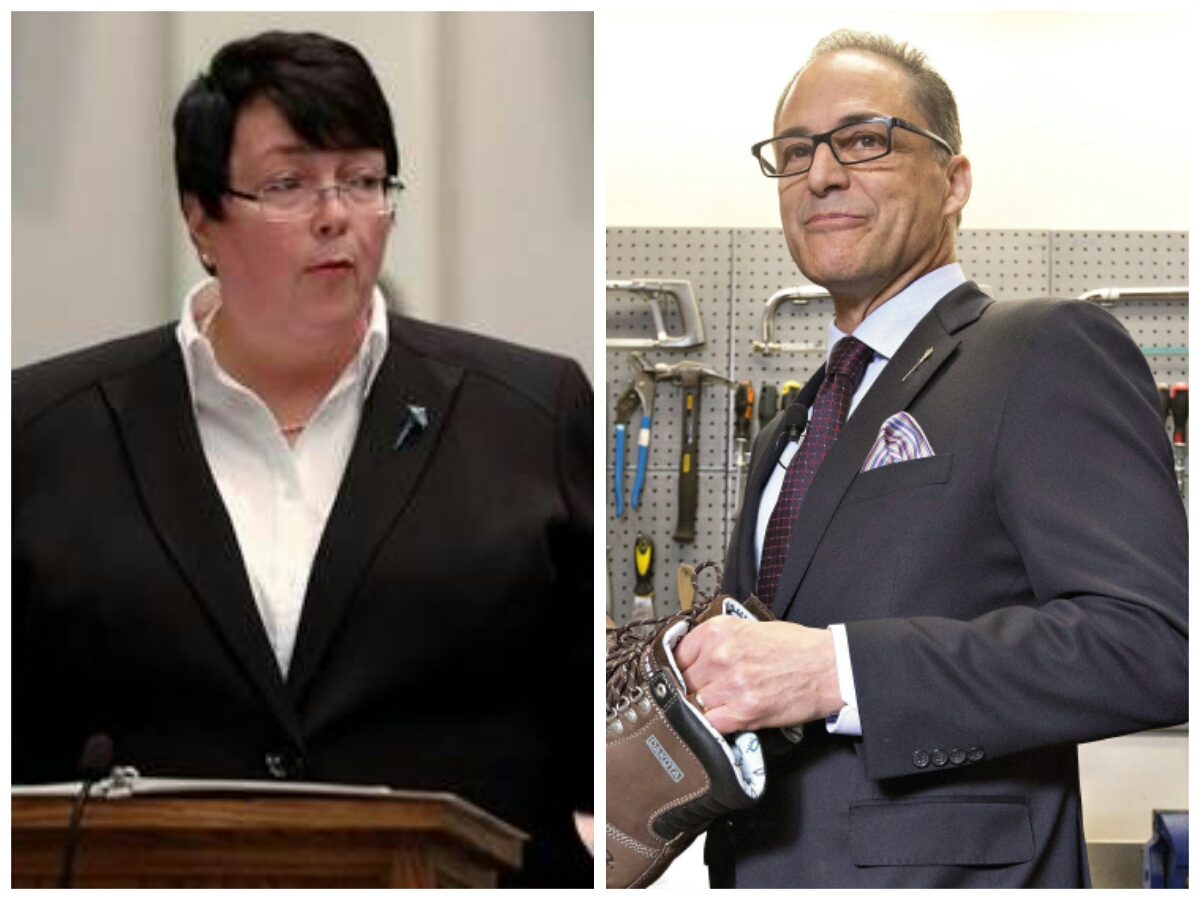CALGARY – Albertans bemoaning the deluge of red ink in the provincial budget can take some comfort in knowing matters could be worse: they could be in Newfoundland and Labrador’s predicament.

The two provinces, which tabled their budgets on Thursday, are both facing massive budgetary holes where oil and gas revenues used to be.
In Alberta, non-renewable resource revenues are expected to be a paltry $1.4 billion this fiscal year — a level not seen in 40 years and 85 per cent below its 2014-15 take.
READ MORE: Praise, criticism aplenty as Premier Notley begins selling Alberta Budget 2016
In Newfoundland and Labrador, oil royalties once made up 30 per cent of the revenues flowing into the province. Now, it’s more like seven per cent.
Though they face similar challenges, the eastern and western provinces have strikingly different game plans for tackling them.
WATCH: Alberta facing biggest deficit in province’s history

Alberta’s NDP government has been adamant that it won’t take a hatchet to key government services. Its budget includes a hefty dose of stimulus and help for families hit by the downturn. Aside from its previously announced carbon levy, it included no new taxes.
Newfoundland and Labrador’s includes a litany of tax and fee hikes, including a “temporary” deficit-fighting levy of up to $900 a year for top earners. In a report, Dominion Lending Centres chief economist Sherry Cooper calls it a “brutal austerity budget.”

Get weekly money news
READ MORE: Tough N.L. budget has steep tax hikes, deep job cuts to tackle $1.8B deficit
The Atlantic province is in a more dire fiscal situation than its western counterpart and, as a result, has less leeway to run big deficits in the coming years, according to University of Calgary economist Trevor Tombe.
WATCH: Newfoundland and Labrador budget full of painful measures

Alberta Finance Minister Joe Ceci said he can’t see a return to balanced budget before 2024.
Although Tombe said he’d prefer to see Alberta wrangle its deficits more quickly than that, he said the province has time to sort itself out given the solid debt position it had going into the downturn.
“It’s hard to construct a scenario where Albertans need to press the panic button,” he said.
“Even if we take 10 years to very gradually get out of deficit, there’s no real risk to the future financial health of the province.”
Tombe said Alberta’s borrowing costs are expected to stay considerably lower than its provincial peers, even with its growing debt load.
Alberta is expected to add $57.6 billion in debt by 2019, representing 15.5 per cent of gross domestic product.
For those who once took pride in Alberta’s debt-free status, those numbers are likely to sting. But in the Canadian context, Alberta’s debt situation doesn’t seem so bad.
Newfoundland and Labrador’s debt is expected to be nearly half of GDP by the end the 2016-17 fiscal year.

“Net debt will weigh in at about 49.5 per cent of GDP by fiscal year-end, which is still below the 70 per cent high of the late 1990s, but up more than 20 percentage points in just the past five years, and once again the highest in Canada,” BMO Capital Markets senior economist Robert Kavcic wrote in a report.
“Had the province not taken some of the action it did today, net debt would be pushing those 1990s highs in very short order.”
Also, when it comes to jobs, Alberta’s economic forecast is much more optimistic than Newfoundland and Labrador’s.
READ MORE: Winners and losers in Alberta budget 2016
Alberta sees its unemployment rate easing to 5.8 per cent in 2019 from 7.9 per cent now. Newfoundland and Labrador predicts its rate will increase to 19.8 per cent in that time frame from the current 13 per cent.










Comments